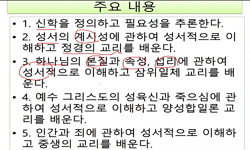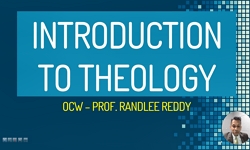The present article seeks to place the language of the New Testament in proper perspective, by locating it in the historical development of the Hellenic language as a whole. The relation of New Testament Greek, along with that of classical Greek, to t...
http://chineseinput.net/에서 pinyin(병음)방식으로 중국어를 변환할 수 있습니다.
변환된 중국어를 복사하여 사용하시면 됩니다.
- 中文 을 입력하시려면 zhongwen을 입력하시고 space를누르시면됩니다.
- 北京 을 입력하시려면 beijing을 입력하시고 space를 누르시면 됩니다.

신약석의에 있어서 헬라어에 대한 총체적 접근방식의 중요성 = The Importance of the Holistic Approach to Greek for the Exegesis of the New Testament
한글로보기https://www.riss.kr/link?id=A87008958
- 저자
- 발행기관
- 학술지명
- 권호사항
-
발행연도
2011
-
작성언어
-
- 주제어
-
KDC
200
-
등재정보
KCI등재
-
자료형태
학술저널
-
수록면
197-256(60쪽)
- 제공처
-
0
상세조회 -
0
다운로드
부가정보
다국어 초록 (Multilingual Abstract)

The present article seeks to place the language of the New Testament in proper perspective, by locating it in the historical development of the Hellenic language as a whole. The relation of New Testament Greek, along with that of classical Greek, to the entire Greek language has come into disaray through the pronunciation introduced by Desiderius Erasmus in 1528, which had as its result the division of the language into two parts: ancient (including the NT) and modern, including Byzantine and mediaeval Greek. This artificial division had two dire consequences: the un-Greek Erasmian pronunciation not only made the language sound as a jumble of inharmonious sounds but it also obscured many communicatory aspects, as for example, word-plays and other rhetorical figures. Ever since the 5th century B.C. Greek was pronounced in the Historical Greek Pronunciation. The other, even more serious matter, was that by separating the later period and refusing to take it into consideration, much material relevant to the interpretation of the New Testament was disregarded to the detriment of a more exact interpretation of the New Testament. This is so, because the New Testament was written during the period of transition from ancient to modern. This period lasted 900 years (from Alexander [335 B.C.] to Justinian [A.D. 565]), at the end of which the Hellenic language emerged as Neohellenic. We must, therefore, apply the holistic or diachronic approach to in investigating the text of the New Testament. The above implies that the NT exhibits not only elements from the ancient phase of the language but also elements that were coming into being during this period, which characterize Neohellenic. This is shown in this study in many ways and through many examples. The article, then, illustrates the importance of the diachronic approach to the Greek language, in which the entire history of the language becomes relevant, when applied in a strictly scientific and critical manner. Comparition between the NT and the Homeric language (through Nonnos), which was 800 years away, and Neohellenic, which is 2000 years away, shows clearly that Neohellenic, in spite of its greater distance from the NT, is much closer to the NT than the language of Homeros. Finally, detailed exegesis in a few selected NT texts, shows that the new meanings and structures that developed during the period of transition, which characterize Neohellenic, are better suited to interpret the NT texts than the ancient meanings. The theological importance here is immense. Such examples, includes the important text of John 15:1-7 concerning the aspect of abiding in Christ in order to bring forth fruit in the Holy Spirit, as well as that central text concerning the coming of the Kingdom of God (Mt 12:28), which has played a vital role in the understanding whether the Kingdom of God is future or has already come.
동일학술지(권/호) 다른 논문
-
- 개혁주의생명신학회
- 학회자료
- 2011
- KCI등재
-
개혁주의생명신학의 영생관 -칼빈의 요한문헌 주석을 중심으로
- 개혁주의생명신학회
- 문병호 ( Byung Ho Mun )
- 2011
- KCI등재
-
- 개혁주의생명신학회
- 김진섭 ( Jin Sup Kim )
- 2011
- KCI등재
-
- 개혁주의생명신학회
- 이신열 ( Samuel Y. Lee )
- 2011
- KCI등재




 KISS
KISS






